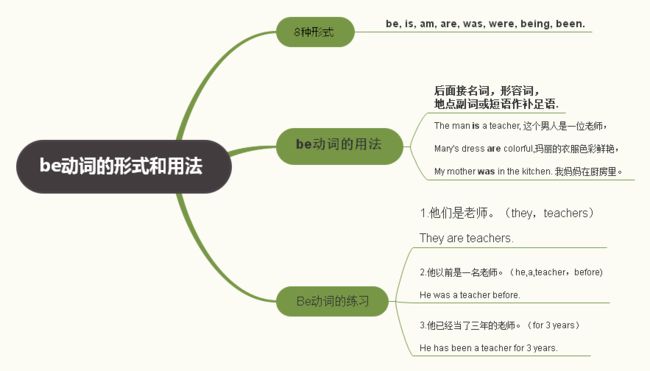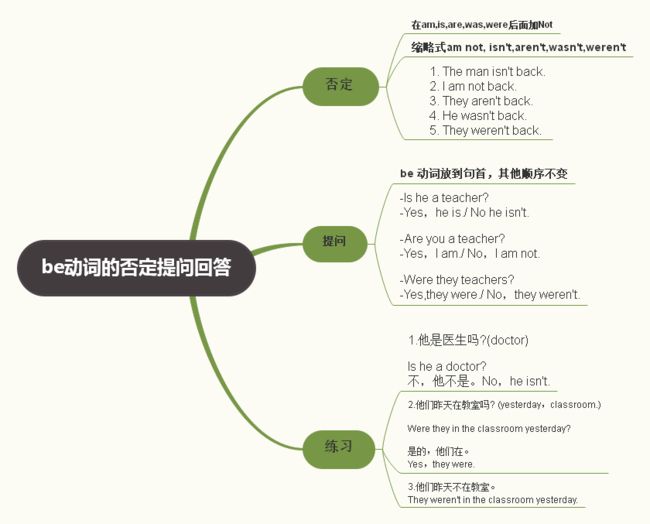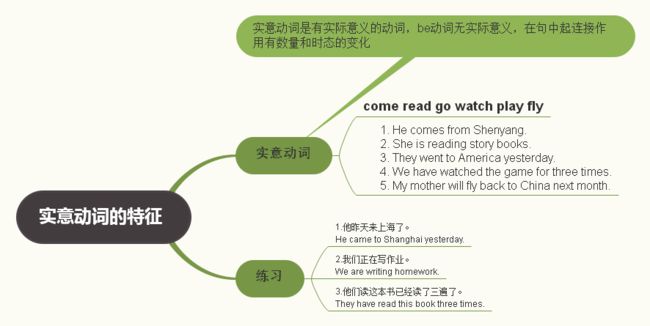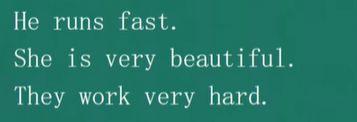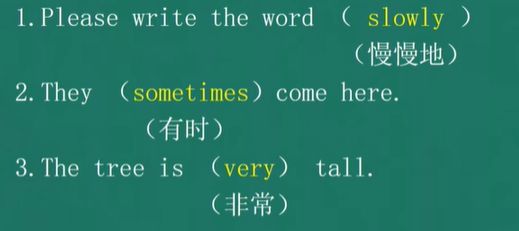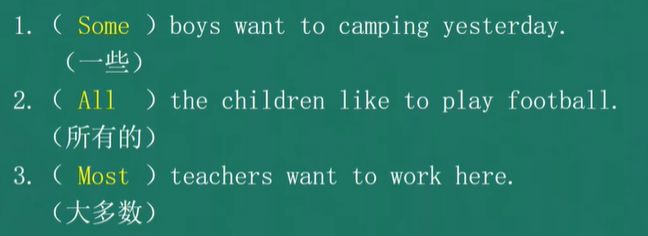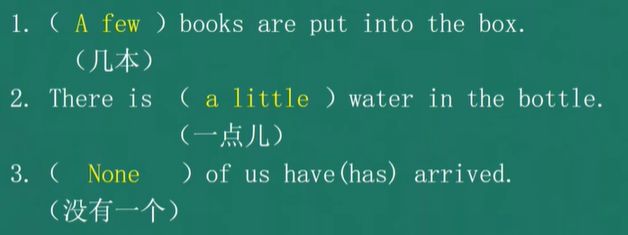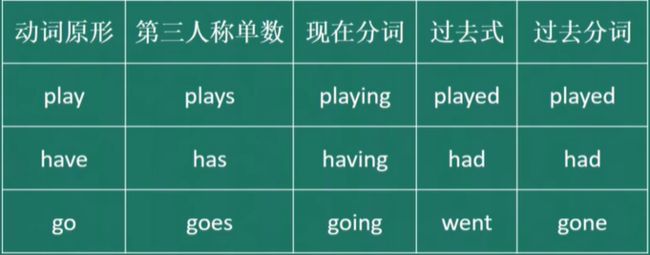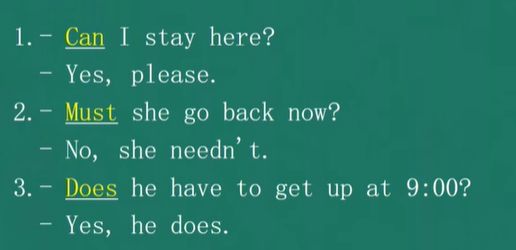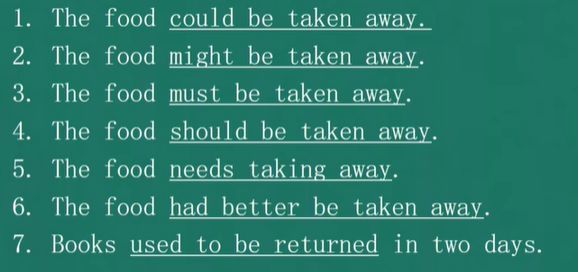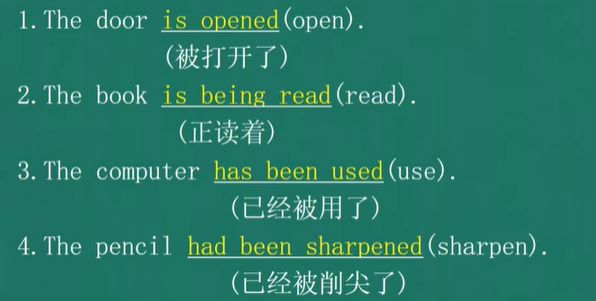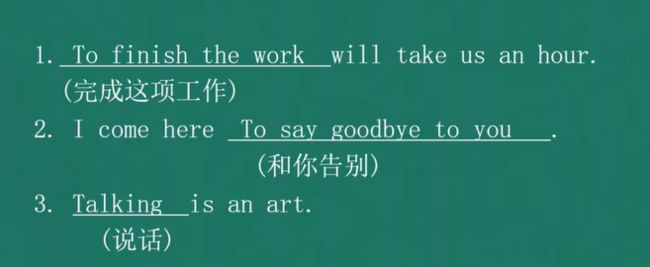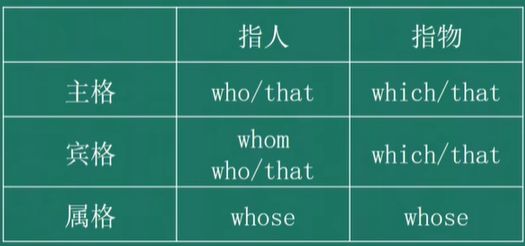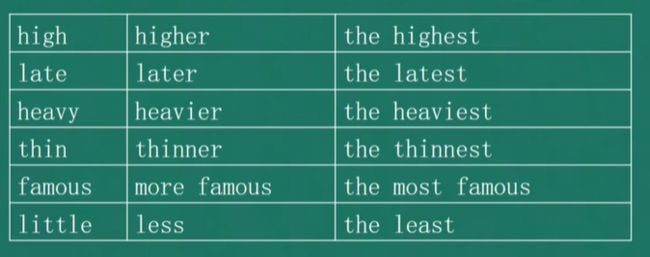pocket英语语法崔荣容笔记
第1讲 语序和五种基本句式
He learns English every day.
他每天学习英语。
5种基本句式
1、主语加谓语 S V
The universe remains. 宇宙长存
2、主语加系动词加表语 S V P
The food is delicious. 这个食物很好吃
3、主语加谓语加宾语 S V O
He took his bag and left. 他拿着他的包离开了
4、主语加谓语加间接宾语加直接宾语 S V o O
间接宾语人,直接宾语物
Her father bought her a dictionary. 她的爸爸给她买了一本词典。
5、主语加谓语加宾语加宾补. S V O C
We make him our monitor. 我们选他当班长
Nothing is impossible to a willing heart.
有志者事竟成.
第2讲 be动词的形式和用法,be动词的形式
8种形式:
be, is, am, are, was, were, being, been.
The man is back,男人回来了,
they are back,他们回来了,
he was back,他回来了,
they were back,他们回来了,
they have been back.他们已经回来了。
be动词的用法,
后面接名词,形容词,地点副词或短语作补足语.
The man is a teacher, 这个男人是一位老师,
Mary’s dress are colorful,玛丽的衣服色彩鲜艳,
My mother was in the kitchen. 我妈妈在厨房里。
Be动词的练习
1.他们是老师。(they,teachers)
They are teachers.
2.他以前是一名老师。(he,a,teacher,before)
He was a teacher before.
3.他已经当了三年的老师。(for 3 years)
He has been a teacher for 3 years.
第3讲 be动词的否定提问回答
be动词的否定,在am,is,are,was,were后面加Not,
缩略式am not, isn’t,aren’t,wasn’t,weren’t
提问:be 动词放到句首,其他顺序不变。
- The man isn’t back.
- I am not back.
- They aren’t back.
- He wasn’t back.
- They weren’t back.
使用be动词提问和回答
-ls he a teacher?
-Yes,he is./ No he isn’t.
-Are you a teacher?
-Yes,I am./ No,I am not.
-Were they teachers?
-Yes,they were./ No,they weren’t.
Be动词的练习
1.他是医生吗?(doctor)
ls he a doctor?
不,他不是。No,he isn’t.
2.他们昨天在教室吗? (yesterday,classroom.)
Were they in the classroom yesterday?
是的,他们在。
Yes,they were.
3.他们昨天不在教室。
They weren’t in the classroom yesterday.
第4讲 代词的主格和宾格(人称代词)
主格代词 I, he, she, it, you, we, they.
l am a teacher.
He is a teacher.
You are teachers.
宾格代词 Me, him, her, it, you, us, them.放在动词的后面,是动词的作用对象
He likes me.
We like her.
I like them.
练习
1.我喜欢它。
l like it.
2.他们认识他。(know)
They know him.
第5讲 名词性 形容词性物主代词
形容词性物主代词
单数形式:my,your,his/her/its,one`s
复数形式:our,your,their
This is my book.
We love our motherland.
Those are your socks.
名词性物主代词
单数形式:mine,yours,his/hers/its,one`s
复数形式:ours,yuord.theirs
The book is ours.
The apple is hers.
练习
1.我的老师是中国人.(teacher,Chinese)
My teacher is Chinese.
2.这个电脑是他们的.(computer)
This computer is theirs.
3.我们的书在书架上.(on the shelf)
Our book is on the shelf.
第6讲 反身代词
通常作宾语或者同位语
myself, yourself, herself, himself, itself
yourselves,ourselves, themselves.
Pleade help yourself to some fish. 请随便吃些鱼。
We enjoyed ourselves last night.我们昨天晚上完玩的很愉快。
The thing itself is not important.事情本身并不重要
练习
- Take good care of yourself .
- She gained control of herself .
第7讲 实意动词的特征
实意动词
come read go watch play fly
实意动词是有实际意义的动词,be动词无实际意义,在句中起连接作用有数量和时态的变化
-
He comes from Shenyang.
-
She is reading story books.
-
They went to America yesterday.
-
We have watched the game for three times.
-
My mother will fly back to China next month.
练习
1.他昨天来上海了。
He came to Shanghai yesterday.
2.我们正在写作业。
We are writing homework.
3.他们读这本书已经读了三遍了。
They have read this book three times.
第8讲 实意动词的否定 提问 回答
使用助动词进行否定
在助动词do、does (一般现在时)、did(一般过去时) 后面加not
do not / don’t
does not / doesn’t
did not / didn’t.
l don’t go to school by bus. ( 一般现在时,主语是单数)
She doesn’t watch TV every day. (单三的否定)
They didn’t swim last night.(一般过去时)
使用助动词 提问 (助动词提前加实意动词原型)
- He often plays golf.
Does he often play golf?
Yes,he does./ No,he doesn’t.
- They go to school by bus.
Do they go to school by bus?
Yes,they do./ No,they don’t.
- Sam had breakfast yesterday.
Did Sam have breakfast yesterday?
Yes,he did./ No,he didn’t.
练习:
1.-他每天都学英语吗?(learn English.)
-Does he learn English every day?
-是的,他每天都学英语。
-Yes he does.
2.Tom昨天没吃早饭。(have breakfast.)
Tom didn’t have breakfast yesterday.
第9讲 使用疑问词进行提问和回答
when,where,who,what,how,
如果疑问词是主语,那么其他语句依照陈述句语序不变
如果疑问词不是主语,需要借助系动词或者助动词
提问:
1、Who bought three books yesterday?
2、What did he buy yesterday?
3、When did he buy three books?
练习:
- Who wanted to go to Shanghai by air?
- Where did they want to go by air?
- How did they want to go to Shanghai?
第10讲 使用疑问词进行提问和回答
how long, how far, how often, why.
-
They have been in China (for three years).
How long have they been in China?
-
It is about (4 kilometers) from Beijing to Xi’an.
How far is it from Beijing to Xi’an.
-
They come to visit me( once a week).
How often do they come to visit me?
-
She came late,(because she missed the bus).
Why did she come late?
练习:
1.他们学汉语多长时间了?
How long have they learned English?
2.你多长时间看一次电影?
How often do you watch movies?
3.你的家离学校多远?
How far is it from your house to your school?
第11讲 名词
表示表征或者事务的词
名词分两类:
1.可数名词( countable noun)数得过来的概念
apple,pencil, student
2.不可数名词(uncountable noun)无法计算的数量或抽象概念
salt,coffee,water,history,love
可数名词有单数和复数之分;
Apple—— apples,
Pencil 一pencils,
Tomato —— tomatoes.
不可数名词无复数,只用单数表征:
salt— salt,
coffee — coffee,
water- water.
名词变复数的规则:
1.一般末尾加上后缀-s (friend -friends)
2.以s,z,x,ch,sh结尾的词,在该词末尾加上后缀-es.
bus -> bues
3.辅音字母+y结尾的名词,将y改变为i,再加-es,
candy -> candies (元音只包括a、e、i、o、u这五个字母,其余的都为辅音。)
4.以-o结尾的名词,如果不是外来词或缩写就加-es
tomato -> tomatoes (番茄)
hippo - > hippos
可数名词前面可以加a(an)数词或量词
不可数名词前不可加a(an),没有复数,但前面可以加量词
练习
第12讲 代词:指示代词和不定代词
指示代词:标识人或事物的代词,用来代替前面已提到过的名词
this(these) ,that(those)
不定代词:指代不确定的人或事物,
常用:one,the other,some,any,something,nothing
No one knows where he is.
Some of the boys want to go to Shanghai,but theothers want to go to Xi’an.
Each of the students has got a book.
练习
第13讲 形容词
(1)形容词通常形容人或事物的状态,性质,大小等,通常用在名词前,be动词后
(2)the+形容词=复数名词,表示一类,后面的动词使用复数形式
The old need more care than the young
练习
第14讲 副词
(1)副词,可以修饰动词,形容词,其他副词以及其他结构
副词的位置:
1.根据情况放在助动词之后,实意动词之前或之后
2.形容词之前,其他副词之前或之后
3.多个助动词时,副词一般放在第一个助动词之后.
He speaks very fast,
they have already left,
they have already been repaired.
(2)常用的频率副词(always,usually,often,sometimes,never…)的位置通常放在一般动词前,be动词后,助动词和实意动词之间
They always come early,
sam often writes homework at seven o’clock
练习
第15讲 不定量表达法(1)
(1)some、any都表示“一些”。
some主要用于肯定句,希望得到肯定回答时,也可用于疑问句
any主要用在否定句和疑问句中
Id been expecting some letters the whole morning,but there werent any for me.
(2)most作形容词时表示大部分的,后面接复数名词
Most people here are from China
(3)every表示“每一个,所有”后面接单数名词
Every one likes the film.
(4)all“所有”,后面接可数名词复数或不可数名词
All the cars are parked in the parking lot.
All the coffee is served on time.
练习
第16讲 不定量表达法(2)
(1)both表示两者都,可做形容词,代词和副词,
either是两者之一,
neither是两者都不
Both his eyes were severely burned.
There are trees on either side of the street.
Neither answer is correct.
(2)many修饰可数名词,
much修饰不可数名词,表示“许多”,
a lot of(lots of),plenty of均可修饰可数和不可数名词
many books
much water
a lot of/lots of books/water.
练习:
第17讲 不定量表达法(3)
(1)a few,为肯定含义“几个”,
few为否定含义“没几个”,
以上两个词均可和可数名词连用。
A few books are put into the box.
Few books are put into the box.
(2)a little为肯定含义“一点儿”,
little为否定含义“没多点”,
以上两个词均可和不可数名词连用
There is a little water in the bottle.
There is little water in the bottle.
(3)none和no one的意思相同,主要作代词,翻译为“一个也不,一点也不”用法稍有区别,
1)none可以接of短语,动词可用单数也可用复数
2)no one不能接of短语,动词可用只能用单数
No one knows the answer.
None of us have (has) arrived.
练习
第18讲 There Here be句型
There/Here + (be) 根据上下文,有多种翻译方法可以翻译成有,是,
be动词根据后面的名词,有单复数变化
There is a book on the bookshelf.
There are some books on the bookshelf.
Here is the bus stop.
Here are your books.
练习
第19讲 一般现在时和现在进行时
(1)一般现在时表示通常性、规律性、习惯性的状态或动作
动词的单三变化:
1.在动词末尾直接加s,如,play-plays
2.以字母s x ch或o结尾的动词加-es.如:guess-guesses.
3.以辅音字母+y结尾的动词,先变y为i,再加-es.如:study-studies
一般现在时否定和疑问句用do,does帮助构成
(2)现在进行时表示现在正在进行或者发生的动作.
句中通常有now等时间副词呼应,基本构成形式为be+doing
动词现在分词变化规则(直去双改):
1.一般情况下,直接在动词后面加-ing.如,work-working
2.动词以不发音的-e结尾 要去e加ing,如,take-taking
3.重读闭音节动词,要双写词尾字母,再加-ing,如,cut-cutting.
4.以-ie结尾的动词,变y再加-ing.如:lie-lying
现在进行时变否定句和疑问句时,将be动词否定或提前
练习
第20讲 一般过去和过去进行时
(1)一般过去时表示过去某个时间里发生的的动作或状态;过去习惯性、经常性的行为
基本结构:主语+动词过去式+其他,一般动词在动词后加ed,
还有一些不规则动词不规则变化
动词一般过去时变化规则(直去双改):
1.一般在动词后加-ed,如,play-played
2.在以字母e结尾的动词后,只加-d,如,like-liked
3.在以辅音字母+y结尾的动词后,改y为i,再加-ed.如:supply-supplied
4.在以重读闭音节结尾且末尾只有一个辅音字母的动词后,双写最后一个辅音字母,再加-ed.如:plan-planned
(2)过去进行时表示在过去某一时刻或某一段时间内进行或发生的动作.
其形式为was/were+doing.
练习
第21讲 将来时
一般将来时表示将来某一时刻的动作或状态,或将来某一段时间内经常发生的动作或状态,常常和表示将来的时间状语连用。
如,tomorrow明天、 next week下周、 in the future将来
结构一:“助动词 will或shall+动词原形” 表示将来发生的事情.
结构二:“be going to+动词原形” 用来表示近期或事先考虑过的将要发生的动作以及有迹象表明必将发生某事,意为 “打算;就要”
结构三:“be doing” 表示位置转移的动词,如:go,come,leave,start,arrive,可用现在进行时表示将来
练习
第22讲 完成时
现在完成时,
have+过去分词,动作过去发生,已经完成,对现在造成影响或后果,动作可能还会持续,可使用的时间状语为:(already)已经 和 yet(还)
过去完成时,
had+过去分词(had+.p.p.),表示句中的动作发生在过去之前,即过去的过去,已经完成,对过去造成了一定的影响或后果
练习
第23讲 动词的用法
动词根据功能分为四类:
实意动词(Notional Verb)
系动词(Link Verb)
助动词(Auxiliary Verb)
情态动词(model Verb)
1.动词有数量和时态的变化,时态通常有三大时态:现在,过去和将来时
2.根据动作进行的状态可分为:一般时,进行时和完成时
3.使用动词时通常将1和2结合,例如:一般现在时,过去进行时
- He goes to school every day.
- He went to hospital last night.
动词形态变化总结:
第24讲 情态动词1can/could may/might
can/could
1)表示能力,用be able to代替,can/could分别表示 现在/过去的能力,
2)客观可能性(can的可能性大),
3)表示请求和允许
He can/could/is able to swim.
He can/could come tomorrow.
Can/could I stay here?
过去和现在的能力区别:
She could speak French before,but now she can`t
may/might
1)表示可能性,may的可能性大,
2)请求,允许,might更委婉,
口语中常用回答:
Yes,please.
No, you can’t/mustn’t.
1、He may/might come here by bus.
2、-May/might I join you?
-Yes,please. /No, you can’t/mustn’t.
练习
第25讲 情态动词2 must/have to should/ought to
must/have to表示必须,必要。
(must表示主观多一些,have to表示客观多一些)
have to有时态和数量的变化。
must 和 have to二者的否定意义不大相同。
如:You mustn’t go.你不准去.
You don’t have to go.你不必去
You must get up early.
It`s going to rain,I have to go home now.(有前置条件,不得不做某事)
should/ought to表示劝告、建议、命令。
should强调主观看法,ought to强调客观要求。在疑问句中通常用should代替ought to、
You should/ought to do the job right now.
Should they stay here now?
练习
第26讲 情态动词3 need / don’t have to
1)need 需要
a.情态动词
b.实意动词,有第三人称单数和时态的变化,后面可加带to的不定式
情态动词:
He need come here early
He needn’t come here early.
-Need he come here early?
-Yes,he need./No,he needn`t.
实意动词:
He needs to come here early.
He doesn’t need to come here early.
Does he need to come here early?
Yes ,he does .No he doesn’t.
2)回答Must 和have to 的提问句时,否定式使用needn’t, don’t have to,等回答方式。
Must I come here early tomorrow?
No , you needn’t /don’t have to
练习
第27讲 情态动词4 had better/would rather
1)had better
表示最好做某事,had虽然是过去式,但不表征过去,better后面接动词原形
He had better eat more .
You’d better finish it right now.
2)would rather
表示 宁愿宁可最好,还是…为好,语感上比had better 要轻
You would rather deal with it now.
否定形式分别为:
Had better not+动词原形,Would rather not+动词原形
He had better not eat any more .
You would rather not deal with it now.
练习
第28讲 情态动词5 used to/would
used to,would
表示过去习惯性动作,可翻译为“过去常常。。。”
1.used to可指过去的状态或情况 ,would则不能
The novel used to be popular.
2.Would表示反复发生的动作,如果某一动作没有反复性就不能用 would ,只能用used to
He would practice English every week.
I used to live in beijing.
3.used to表示过去经常性或习惯性的动作或状态已经结束,would则表示有可能再次发生
People used to believe that,the earth was flat.
He would go to the park as soon as he was free.
练习
第29讲 情态动词的否定和疑问
1.情态动词的否定
情态动词+not+ v动词原形
may not 可能不
can’t 不可能
- He can’t sing an English song.
- He may not know her.
- He mustn’t go there.
- He doesn’t have to go there.
2.使用情态动词进行提问
情态动词+主语+ v动词原形
1.- Can he sing an English song?
- Yes,he can./ No,he can’t.
2.- Must he go there?
- Yes,he must./ No,he needn’t.
3.- Does he have to go there?
- Yes,he does./ No, he doesn’t.
第30讲 情态动词+have+过去分词
(1)情态动词+have+过去分词
a.表达过去事实
b.推测的含义(但助动词should例外)
He can/could/may/might have arrived.
They may/might have arrived.
He must have arrived.
(2)Should +have+过去分词 本应该… \Needn’t +have+过去分词 本不需要…
He should have arrived
They should have finished the work.
You needn`t have done so.
(3)must have+过去分词 准是已经… \can’t have+过去分词 不可能已经…
He must have arrived
He can`t have arrived
练习:
第31讲 被动语态1 被动语态的构成和含义
(1)如果主语是动作的承受者,则用动词的被动语态做谓语。
(2)被动语态的构成:
be+动词的过去分词(p.p.)… by sb
He is taken to America by his mother.
(3)被动语态有各种时态
练习
第32讲 被动语态2 被动语态和情态动词结合
1.被动语态与情态动词结合动词:
Can/could+be+done(动词过去分词)
May/might
must/ have to
should/ought to
had better/ would rather
used to /would
need +doing/to be + 动词过去分词
2.和情态动词结合的形式
练习
第33讲 被动语态3 (by+行为者)可省略
动作的行为者不分明,或不重要或上下文中提到了行为者时,by+行为者可以省略
练习
第34讲 被动语态4 被动语态的疑问句
(1)被动语态的一般疑问句:
助动词+主语+(其它助动词)+动词过去分词……?
1.-Is the information needed by him?
-Yes,it is./No,it isn`t.
2.-Has the computer been used by her?
-Yes,it has./No,it hasn`t.
3.-Will the room be cleaned?
-Yes,it will./No,it won`t.
(2)被动语态的特殊疑问句:
疑问词+助动词+主语+(其他助动词动词)+动词过去分词~?
1.The infomation is needed by them.
What is needed by them?
2.The girl is taken to Shanghai.
Where is the girl taken?
3.The book has been read three times.
How many times has the book been read?
练习
第35讲 非谓语动词1
to+动词原形 VS 动词原形+ing
1.动词不定式,由to+动词原形构成,可以做 主语,宾语,宾补,定语 表语和状语
主语:To get there by bike will take us an hour.
宾语:The driver failed to see the car in time
宾补:We believe him to be guilty (有罪的)
定语:The next train to arrive is from Seoul.
表语和状语:
My suggestion is to put off the meeting.
I come here only to say goodbye to you.(目的状语)
2.”动词原形+ing“可作动名词用,具有动词的特征和变化形式,但在句子中的用法及功能类同名词:在句子中可以做主语,宾语,表语,定语,它也可以被副词修饰或者支配宾语
Reading is an art.
They went on working and never stopped talking.
Your task is quickly cleaning the room.
This is a reading room.
练习:
第36讲 非谓语动词2
形式主语/宾语 不定式与动名词的否定式
1、to不定式或动名词可以在主语的位置上,但一般用it代替它做形式主语。这种情况it叫形式主语。
1)It’s a great honor to be invited 被邀请很荣幸
2)It’s no use crying over spilt milk 覆水难收
2、宾语的位置上,用it代替它做形式宾语,这种情况叫形式宾语
1)We think it important to learn English 我们认为学习英语很重要
- I found it pleasant walking in the part 我觉得在这里散步很愉快
3.对动名词或不定时进行否定时,在不定式或动名词前加not否定就可以了
1)He pretended not to see her. 他假装没看见她
2)He regrets not joining the them. 他后悔没有加入他们。
练习
第37讲 非谓语动词3 to不定式表示目的
(1)in order to +v 表示目的
(2)so as to +v 表示目的
(3)由 in order to引导的目的状语,置于句首,句尾均可
由so as to引导的目的状语,只能置于句尾
I`v written it down in order (not)to remember it.
我把它写下来是为了(不)记住它。
He shouted and waved so as (not)to be noticed.
他一边喊一边挥手,以免被注意到。
(4)它们的否定形式分别在to 前加not
练习:
第38讲 非谓语动词4 常见的不定式,动名词句型
包含不定式和动名词的一些固定结构:
(1)too~to…太…以至于不能…
The room is too small to live
(2)enough + n + to +do / adj +enough + to +do 足够…可以…
There is enough food to eat.
The box is big enough to contain six apples.
(3)On doing 一…就…
On seeing that snake,the girl is very frightened.
(4)There i s no hope of doing sth没希望…
There is no hope of seeing him.
(5)feel like doing 想要~
I feel like eating ice cream now
(6)have a hard time doing 做~艰难
They have a hard time solving the problem themselves.
练习
第39讲 非谓语动词5 现在分词/过去分词 分词句
(1)v+ing可以称之为动名词,也可称之为现在分词
Writing books is his job.
He is writing a book.
(2)p.p.(动词的过去分词)用在完成时和被动语态当中
He has written the homework.
The homework is written.
(3)分词句是包含现在分词和过去分词的分句
The student went out of the classroom,laughing and talking.
Accompanied by his friend,he went to the railway station.
以上分词句是作伴随状语
练习
第40讲 原形不定式1 使役动词
(1)使役动词,表示 “使,让。。。”
have,make,let做使役动词,构成形式为:have/make/let+宾语+V
He made me laugh.
I let him go.
Please have him come here.
(2)get和help都做使役动词,
get的使役动词句为,“get+宾语+to+v”,
help的使役动词句为,“help+宾语+(to)+v”
I can`t get anyone to do the work property.
I helped him (to) repair the car.
(3)在1.2中所有使役动词+宾语+过去分词,表示 ”让某物/人被别人…“
I must get my hair cut
He couldn`t make himself heard.
Can you get the work finished in time?
练习:
第41讲 原形不定式2 感官动词
1.感官动词see/watch/observe/notice/hear/smell/taste/feel+宾语+动词原形/现在分词
a)+动词原形,表示动作的真实性,
b)+现在分词,表示动作的连续性,进行性
I saw him work in the garden yesterday.
I saw him working in the garden yesterday.
2.和使役动词相似,感官动词后可接过去分词,感官动词+宾语+过去分词,表示被动含义
John saw a man knocked down by the car.
练习
第42讲 假设1 只单纯表示条件
(1)条件状语从句。用“if”引导条件状语从句,从句为现在时,通常译作 “如果。。。”
If you get up early,you will catch up with the train.
(2)if 引导的条件状语从句,可以放在句首也可以放在句尾
If you ask him,he will help you.
She will be upset if you fail the exam.
练习
第43讲 假设2 与现在事实相反的虚拟语气
(1)if从句是一种虚拟的条件和假设,和现在事实相反的。主从句时态具体如下:
从句 :动词过去式(be用were)
主句:Would /could /should /might+动词原形
If I were you ,I would join them.
She would come with you if you invited her.
练习
第44讲 假设3 与过去事实相反的虚拟语气
(1)if从句是一种虚拟的条件和假设,和过去事实相反的。
主从句的时间状态具体如下:
从句:had+动词过去分词
主句:Would /could /should /might +have+动词过去分词
If I had got there earlier , I should have met her.
If he had taken my advice,he would not have made such a mistake.
练习
第45讲 假设4 wish/as if+过去/过去完成时
(1)wish后面的从句,译为:“希望…就好了”,是不可能实现的假设
a.与现在事实相反愿望
I wish I were as tall as you(一般过去时)
b.与过去事实相反
He wished he hadn’t said that.(过去完成时)
c.将来不大可能实现的愿望
I wish it would rain tomorrow.(would /should /could.)
(2)As if,翻译为 “看起来好像”
a.如果从句表示与现在事实相反
You look as if you didn’t care
b.从句表示与过去事实相反
He talks about rome as if he had been there before
c.从句表示与将来事实相反
He opened his mouth as if he would say something.
练习
第46讲 定语从句[关系代词]that,who,which,whom ,whose
定语从句:在句中作定语,修饰一个名词或代词,被修饰的名词叫先行词,其后的从句就是定语从句,由关系词(关系代词或关系副词)引出。
关系代词,在从句中作一定的成分,代替先行词,起到连接先行词和从句的作用
常用关系代词:
That ,who, which, whom,whose
The girl whom/that I spoke to is my cousin.
a.先行词是人的话用that,who, whom, whose来引导从句。
“whom”在从句中作宾语
“who” 和 “that”在从句中既可作主语又可作宾语
They are the people that/who were seen yesterday.
They are the people whom/that/who I saw yesterday.
They are the people whose wallets were lost yesterday.
b.先行词是动物/事物的话,用which,that,whose引导定语从句
which,that在从句中可做主语和宾语,作宾语时可以省略
He came back for the book which/that he had forgotten.
He came back for the book which/that was on the desk.
This is the chair whose legs were broken.
练习
第47讲 定语从句[关系副词]when, where, why
why:用于修饰表示原因的名词
(eg.the reason)
We dont know the reason why he didnt show up.
when:修饰表示时间的名词
(eg.next week)
We’ll put off the picnic until next week,when the weather may be better.
where:修饰表示地点的名词
(eg.the place)
We don`t know the place where he lives
练习
第48讲 宾语从句 连词
从属连词:that,if,whether
He said that he was there yesterday.
He doesn`t know if/whether he was there.
连接代词:who,whom,whose,what
Do you know whom he likes?
Do you know whose book it is?
Do you know what he is looking at?
连接副词:when,where,why,how
He wants to konw when the party is.
He wants to konw where the party is.
He wants to konw why they have a party.
He wants to konw how they come.
练习
第49讲 比较级 & 最高级1
1、通常在形容词和副词后面加“er”“est”
hard-harder-the hardest
2、词尾是不发音的单音节e时,加“r”,“st”
nice-nicer-the nicest
3、词尾是辅音字母+y的双音节时,去掉“y”加“ier”“ies”
dry-drier-the driest
4、以一个辅音字母结尾的重读闭音节(单音节).时,双写最后一个字母,加“er”“est”.
hot-hotter-the hottest
5、多音节和双音节,在形容词和副词前加
程度加强:“more” “the most”
程度减弱:“less” “the least”
interesting-more/less interesting
-the most/the least interesting
6、不规则变化:good-better-the best
many-more-the most
练习
第50讲 比较级 & 最高级2
A + 比较级+than+B
形容词或副词的比较级:表示“比较···”
He is taller than his brother.
The book is more expensive than the pen.
Her English is better than his.
最高级+表示范围的介词短语
形容词的最高级:表示“最···”
He is the tallest in his class.
The book is the most expensive of the three.
Her English is the best among the three.

